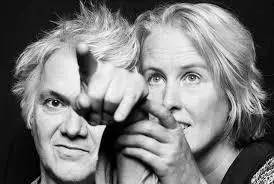
Jodi, is a collective of two internet artists, Joan Heemskerk and Dirk Paesmans, created in 1994. They were some of the first artists to create Web art and later started to create software art and artistic computer game modification. Their most well-known art piece is their website wwwwwwwww.jodi.org, which is a landscape of intricate designs made in basic HTML. JODI is represented by Upstream Gallery, Amsterdam.
Digital poetry is a form of electronic literature, displaying a wide range of approaches to poetry, with a prominent and crucial use of computers. Digital poetry can be available in form of CD-ROM, DVD, as installations in art galleries, in certain cases also recorded as digital video or films, as digital holograms, on the World Wide Web or Internet, and as mobile phone apps.
Electronic literature or digital literature is a genre of literature where digital capabilities such as interactivity, multimodality or algorithmic text generation are used aesthetically. Works of electronic literature are usually intended to be read on digital devices, such as computers, tablets, and mobile phones. They cannot be easily printed, or cannot be printed at all, because elements crucial to the work cannot be carried over onto a printed version.
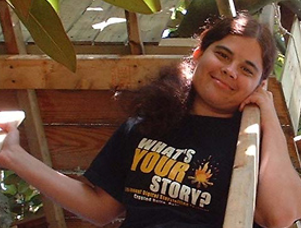
Deena Larsen is an American new media and hypertext fiction author involved in the creative electronic writing community since the 1980s. Her work has been published in online journals such as the Iowa Review Web, Cauldron and Net, frAme, inFLECT, and Blue Moon Review. Since May 2007, the Deena Larsen Collection of early electronic literature has been housed at the Maryland Institute for Technology in the Humanities.
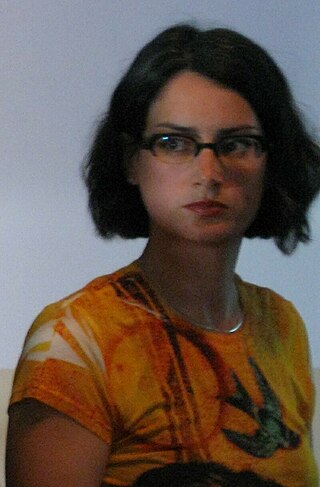
J. R. Carpenter is a British-Canadian artist, writer, and researcher working across performance, print, and digital media. She was born in Nova Scotia in 1972. She lived in Montreal from 1990 to 2009. She emigrated to England in 2010, and became a British citizen in 2019. She now lives in Southampton, England.
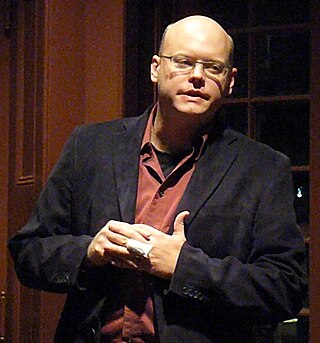
Scott Rettberg is an American digital artist and scholar of electronic literature based in Bergen, Norway. He is the co-founder and served as the first executive director of the Electronic Literature Organization. He leads the Center for Digital Narrative, a Norwegian Centre of Research Excellence from 2023 to 2033.
John Howland Cayley is a Canadian pioneer of writing in digital media as well as a theorist of the practice, a poet, and a Professor of Literary Arts at Brown University.
David Jhave Johnston is a Canadian poet, videographer, and motion graphics artist working chiefly in digital and computational media,. and a researcher at the Center for Digital Narrative at the University of Bergen. This artist's work is often attributed, simply, to the name Jhave.
Amira Hanafi is an American-born poet and artist who has published several works of electronic literature. She holds both American and Egyptian citizenship. A Dictionary of the Revolution, a creative work she completed in 2017, documents the 2011 Egyptian uprising. It was the winner of the 2018 New Media Writing Prize and Denmark's 2019 Public Library Prize for Electronic Literature.
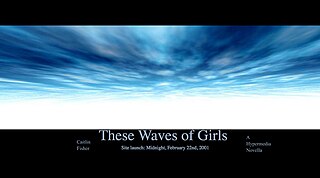
These Waves of Girls is a hypermedia novella by Caitlin Fisher that won the Electronic Literature Organization's Award for Fiction in 2001. The work is frequently taught in undergraduate literature courses and is referenced in the field of electronic literature as a significant example of early multimodal web-based hypertext fiction, placing Fisher "at the forefront of digital writing".
Lexia to Perplexia is a poetic work of electronic literature published on the web by Talan Memmott in 2000. The work won the trAce/Alt-X New Media Writing Award that year.
This is How You Will Die is an interactive digital poetry and art game created by Jason Nelson, a new media artist, digital poet, and lecturer. Released in 2005, the game combines elements of poetry, digital art, and chance-based mechanics to explore the concept of death and the unpredictability of life.
Generative literature is poetry or fiction that is automatically generated, often using computers. It is a genre of electronic literature, and also related to generative art.
With Those We Love Alive is a Twine interactive fiction game written by Porpentine. It was released on October 1, 2014 in both English and Hungarian. The musical score was composed by Brenda Neotenomie.
Tramway is a combinatorial and interactive poem by Alexandra Saemmer, first published in 2000 and recreated in 2009. Its central theme is the act of closing the eyes of her father on his death. Tramway, by Alexandra Saemmer is a multimedia hypertext work based on her experiences with her father's death. This work is a notable use of Flash as a transitory medium and the content was designed to degrade as computing power increased. It is written in French.
haikU is a browser-based, audience participatory, haiku poem project. The project displays randomly generated haiku poems, and allows the Internet audience to contribute to the project's database of haiku lines. The project is known as a work of electronic literature and for its use of an evolving database, and for the relative coherence of its output. It was created by Nanette Wylde in 2001 and is considered a form of interactive digital poetry.
Caitlin Fisher is a Canadian media artist, poet, writer, and Professor of Cinema and Media Arts at York University in Toronto where she also directs the Immersive Storytelling Lab and the Augmented Reality Lab. Fisher is also a Co-founder of York’s Future Cinema Lab, former Fulbright and Canada Research Chair and an international award-winning digital storyteller. Creator of some of the world’s first AR poetry and long-from VR narratives. Fisher is also known for the 2001 hypermedia novel These Waves of Girls, and for her work creating content and software for augmented reality.
Grafik Dynamo is an online artwork and work of electronic literature by Kate Armstrong and Michael Tippett, commissioned by the arts organization Turbulence and published in 2005. Grafik Dynamo creates a constantly changing three-frame graphic comic strip by combining speech bubbles and text frames with text written by Armstrong with images that are pulled in from user posts to LiveJournal and Flickr.
The NEXT: Museum, Library, and Preservation Space is a repository of net art, electronic literature and games. It is supported by the Electronic Literature Lab, Washington State University at Vancouver and the Electronic Literature Organization. This is a digital museum dedicated to reviving and maintaining these works to make them accessible to all. Physical artifacts are held at the Electronic Literature Lab in Washington, US.




